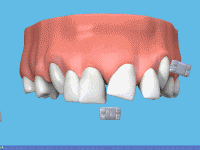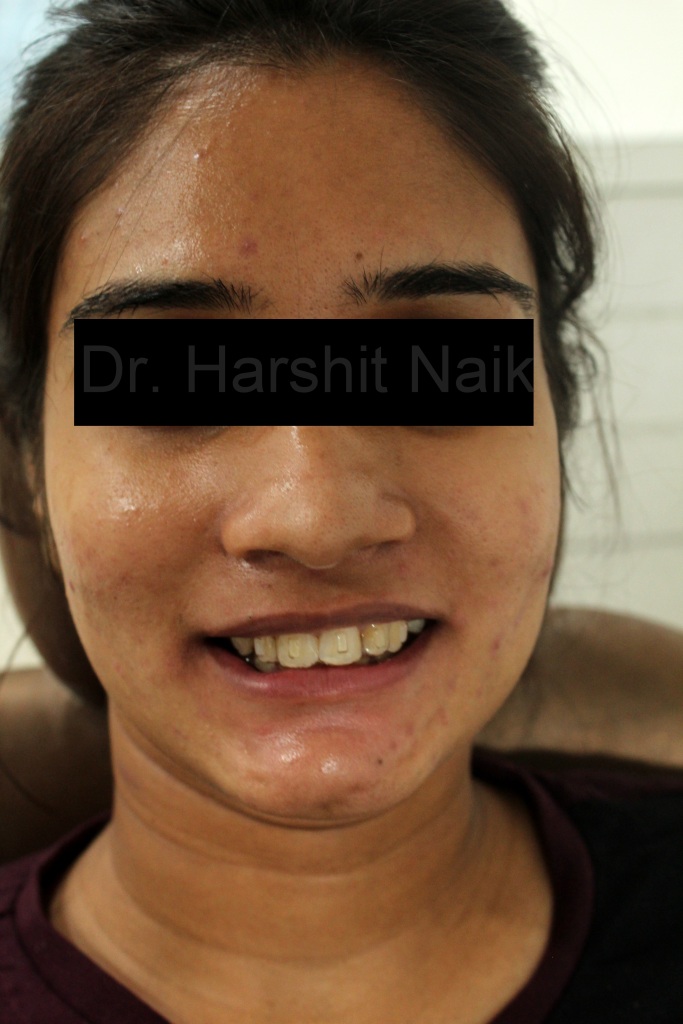

Many patients or their parents always ask us what is better for them- aligners or braces???
It really is a personal decision, so we thought we would help you with some information that you could consider for a smooth decision making. It is important to remember that aligners can treat most, but not all, orthodontic problems. Therefore, it is important that you discuss with your orthodontist at your very initial consultation about which option will help you get the best results.
For many cases, however, both options are available which means you get to decide according to your preference and what best suits your lifestyle. Braces are made of metal or ceramic and are attached to your teeth. Metal wires and rubber bands are then used to provide a force to help the teeth move into the correct position.
Aligners are made up of plastic-type material and are custom made to fit your teeth. Each aligner moves the teeth step by step towards the final position. Small bumps of composite resin (tooth colored filling material) are attached to various teeth to help the aligner grip the tooth so that it can be moved correctly.
Aligners
Advantages:
- Appearance: Aligners are less noticeable than braces as they are clear and custom made to fit your teeth. This can be a factor for many, but not all patients. If you are a social person or have a lot of social commitments, you might prefer this.

- Diet: As you can remove your aligners when you are ready to eat, your diet is not affected. You will be able to eat all the foods you like. Some foods are difficult or uncomfortable to eat with braces and can cause breakages which can delay treatment and require extra visits to have repairs done and may be extra cost.
- Hygiene: As your aligners are removable, you can brush and floss as per your normal routine. This is significant as cleaning your teeth with braces in place is challenging for many patients. Also the other gum related problems do not arise if you are able to properly maintain the oral hygiene.
- Appointments: As the tooth movement is pre-planned by your Orthodontist, the actual visits to the practice are usually much simpler and, in some cases, can be fewer overall. This can be a big advantage for all those who are living busy lives!
- Comfort: Generally speaking, aligners are more comfortable than braces. Although the teeth can still be somewhat tender as they begin to move, the lips and cheeks tend to be less irritated as the plastic aligner is smoother than the metal or porcelain braces. This may be particularly relevant for those playing contact (or semi-contact) sports.

Disadvantages:
- Compliance (patient cooperation): Aligners need to be worn 20-22 hours a day to be effective. This means they are only to be removed for eating and cleaning. Compliance equals results! So patients need to wear them on their own and not forget to wear them because this is going to cost them their time.
- Aligners need to be removed for eating and cleaning. Some patients may find it difficult to do this in public if they feel shy or embarrassed about it.
- Effectiveness: Aligners can treat most cases, but not all. In complex situations, your orthodontist may recommend braces rather than aligners. If you insist on aligners anyway, the final result may not be as precise. Or else you may be given an option of wearing braces first which can be followed by aligners treatment. This decreases the time of wearing braces
- Cost: In most cases, the cost of aligners can be more than braces. However, in a few cases they are similar or the same. Your orthodontist can discuss the cost of your options before you decide.
Braces
Advantages:
- Applicable to all cases: Whereas aligners can treat most but not all cases, braces can be used to treat all cases. That means braces are always an option, Braces is the gold standard!!
- Variety of braces: Braces can be various types of metal braces, with or without colours. There are also ceramic/tooth colored braces which are much more esthetically appealing compared to regular metal braces.
- Compliance: Because the braces are fixed to your teeth, you cannot forget to wear them, or lose them. This can be useful for some patients if they are not internally motivated to comply with wearing aligners adequately.
Disadvantages:
- Hygiene: It is much more challenging to clean your teeth with braces rather than aligners. If cleaning is not done adequately, real damage can occur to the teeth. This may lead to the decision to remove your braces early, before an optimal final result has been achieved. Improper hygiene invites gum problems and cavities, deteriorating the health of your oral cavity.
- Diet: With braces attached to your teeth, your diet will need to be modified. Hard foods (or night time grinding) can cause breakages which can slow or stop your treatment progress. Also, as you are more prone to decay with braces on, sugary sticky foods need to be avoided. A poor diet, plus inadequate hygiene is a recipe for disaster!
- Comfort: Generally speaking, braces are more likely to cause discomfort as they can rub on the cheeks and lips. Some patients suffer from this more than others and is often a consideration for people involved in some sports and other activities.
- Appearance: Braces (even the ceramic ones) are more noticeable than aligners. This is important for some patients depending on their occupation, hobbies and personality. But there are quite a few who prefer wearing braces just for the show of it (of course for the treatment of improperly aligned teeth) but they personally prefer the show of metal braces.

- Appointments: The appointments needed for braces tend to be longer and more involved, with active adjustments needed to be carried out in the dental chair. There may be a need for more frequent visits as well.
Last but not the least
Price
If the cost of treatment is a concern, traditional braces are usually the more affordable option. Braces approximately cost between ₹25000/- to ₹60000/-
depending on which braces you select whether it is metal or ceramic.
Invisalign costs will vary depending on how many trays are required. The number of trays is dependent on the severity of the changes needed to your teeth. Invisalign may cost anywhere between about ₹80000/- to ₹300000/-.
You can talk to your orthodontist about the price before making a decision. If you have dental insurance, they may offer some or full coverage of the cost of braces or Invisalign. You can contact your insurance or check your coverage to estimate the total cost of either braces or Invisalign. In India, there are lesser to no options for getting the cost covered under any medical provisions.
There’s a lot to consider when you are weighing up the options for orthodontic treatment. Hopefully the information provided above will be useful in helping you decide which option suits you the best. There are no right or wrong options, however being informed about your choice and what it will mean on a day-to-day basis is very important. Decide what pros or cons matter the most to you to help make your decision easier. Most importantly, ask questions. Make sure you have all the information you need to make an informed decision
And we would be more than glad if you would like us to be your guides for the same. If you need a breakthrough this dilemma, we can help you choose what could work the best for you.
For any comments, compliments or suggestions, you can always write to us at following:
Email: 100nidc@gmail.com
Insta: https://instagram.com/namah_ortho_dental_clinic
Phone:+91-7016304744
Leave a comment